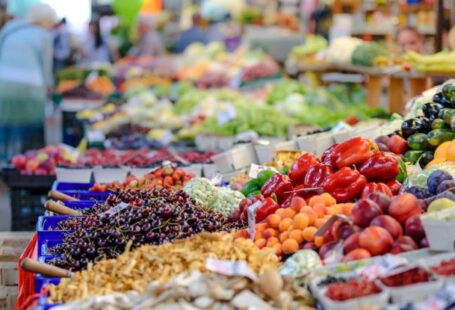When it comes to making sustainable choices in our daily lives, the food we eat plays a crucial role. With growing concerns about climate change and its impact on the environment, many individuals are looking for ways to reduce their carbon footprint. One popular suggestion is to eat locally grown food. But can this simple switch in our food choices really make a significant difference in our overall carbon footprint? Let’s explore the potential impact of eating locally grown food on the environment.
The Benefits of Eating Locally Grown Food
Supporting Local Farmers
Choosing to eat locally grown food can have a positive impact on local farmers and the community. By purchasing food from local farmers, you are supporting small-scale agriculture and helping to strengthen the local economy. This support can help farmers continue to use sustainable farming practices that are better for the environment.
Reducing Food Miles
One of the key benefits of eating locally grown food is the reduction in food miles. Food miles refer to the distance that food travels from the farm to your plate. By choosing locally grown produce, you are cutting down on the transportation and distribution involved in getting food to your table. This reduction in food miles can significantly lower the carbon emissions associated with your food consumption.
Promoting Seasonal Eating
Eating locally grown food also encourages seasonal eating. When you choose to eat fruits and vegetables that are in season in your region, you are reducing the need for energy-intensive methods of food production such as greenhouse farming or long-distance transportation. Seasonal eating can help lower the overall carbon footprint of your diet and promote a more sustainable food system.
Preserving Biodiversity
Local farms often prioritize biodiversity and sustainable farming practices to maintain the health of the land and ecosystem. By supporting local farmers, you are contributing to the preservation of biodiversity and the protection of natural habitats. This can have a positive impact on the environment and help maintain healthy ecosystems for future generations.
Challenges of Eating Locally Grown Food
Limited Availability
One of the challenges of eating locally grown food is the limited availability of certain products, especially in regions with shorter growing seasons. While many fruits and vegetables can be sourced locally, other food items such as grains, oils, and spices may be more challenging to find from local sources. In such cases, consumers may need to explore alternative options or find ways to support local producers of these items.
Higher Costs
Another potential challenge of eating locally grown food is the higher costs associated with small-scale farming and local production. Local food products may be priced higher than mass-produced items due to the smaller scale of production and the use of sustainable farming practices. While supporting local farmers is important, the higher costs of locally grown food may be a barrier for some consumers.
Making Informed Choices
While eating locally grown food can have a positive impact on your carbon footprint, it is essential to make informed choices based on your individual circumstances and priorities. Consider factors such as the availability of local products in your area, your budget, and the specific environmental impact of different food items. By being mindful of your food choices and supporting local producers when possible, you can contribute to a more sustainable food system and reduce your carbon footprint.
In conclusion, eating locally grown food can indeed improve your carbon footprint by supporting sustainable farming practices, reducing food miles, and promoting seasonal eating. While there are challenges associated with sourcing all food locally, making conscious choices about the food you consume can have a positive impact on the environment. By supporting local farmers and prioritizing locally grown produce, you can play a part in creating a more sustainable and environmentally friendly food system.





